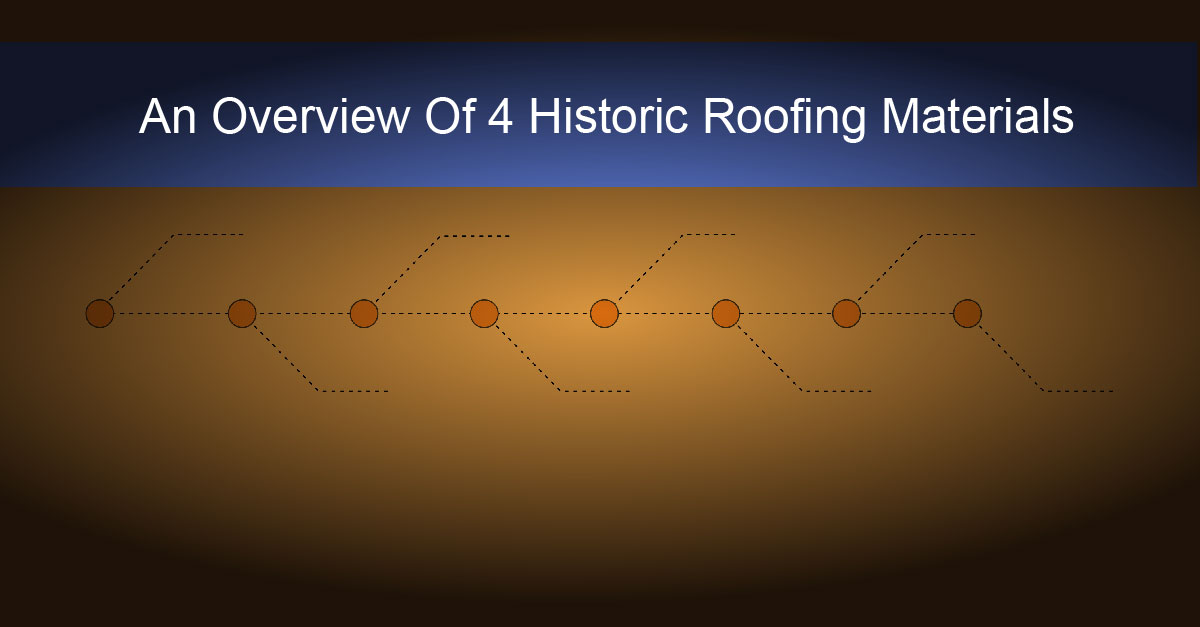
Historic homes have certain charm and beauty, not to mention historical significance. This makes them easy to fall in love with. While it can be rewarding, owning a historical home presents a set of unique challenges. For instance, when it comes to renovation, you have to be respectful to its past and keep it functional for now and the future when you revamp the well-aged structure.
Roofing, in particular, is one of the most challenging aspects when it comes to renovating your historic home. These old structures have specific roofing requirements and differ from modern properties. To preserve the original look, the roofing company has to maintain the original design, style, and material composition. Here’s an overview of historic roofing materials you can use to renovate your historic home.
Slate
Slate roofing tile is generally known as one of the highest quality, most durable roofing materials in the market. Slate roofing has a long and storied history going back thousands of years and spans the globe. Slate roofs are made of sedimentary rocks of volcanic ash and clay. Comprising of 100 percent natural stone, slate roofing tiles have a natural cleft surface with picturesque color variation extending over the entire roof.
Slate shingles were a popular choice for homes built in the 19th and 20th centuries due to their winning combination of durability and aesthetic appeal. It’s common to see historic homes in the United States with their original slate shingles, thanks to their lengthy lifespans. As a roofing material, slate is highly resistant to fire, inclement weather, and other hazards. Slate roofing tiles give your home a classical appearance and never go out of style – a perfect option for historic homes.
Wood
In the past, homeowners had very limited options for vis-à-vis roofing materials. Wood is among the oldest and most enduring of all the materials used for roofing surfaces. The initial homes in colonial America comprised of wood roofing. Wood shingles and roof shakes are still a popular option in modern-day America, especially where a rustic style is desired. Wood shingles and shakes are made from regional species of wood. Cedar and cypress are common options.
Wood shingles come in a plethora of shapes and styles. Installing a wood shingle roof in your historic home will help ensure the roof is able to protect your home’s historic interiors. Wood shingles can last up to 30 years if installed properly. On the downside, wood roofs are prone to specific types of wear and tear, such as rot from moisture and buckling. However, wood roofs are relatively easy to repair or replace when there is damage.
Metal
Metal roofing is often seen in historic structures from the 19th century. The exact type of metal used in these roofs varies, but the most popular option is copper. Copper roofs were the first type of metal roofing. A lot of historic buildings are still rocking their original greening copper roofs to this day. Metal roofing offers significant benefits to older homes. They are durable, easier to maintain, and more energy-efficient.
Metal shingles come in a wide variety of shapes and styles. Historic homes with metal roofs have added protection from hazards such as a fire. However, the biggest downside to metal roofing is corrosion. Fortunately, there are solutions available to reduce the risk of corrosion and rust when installing metal roof shingles in your home. For instance, professional roofing companies recommend galvanization to mitigate the effects of corrosion and rust commonly associated with metal roofs.
Tile
The use of clay tiles for roofing goes back to the 17th century. Clay roofing tiles provide a wide array of benefits for historical homes. For instance, clay roofing tiles are made to withstand wear and tear from sunshine exposure. Rather than fading or becoming brittle as a result of exposure to sunshine for long periods, clay tiles are able to retain their original color over the years. On the downside, clay tiles are highly prone to damage from flying objects.
Clay tiles offer impressive value for roof restoration for your historic home, thanks to their longer lifespan, aesthetic appeal, and durability. Clay roofing tiles are also fire resistant, which means they reduce the risk of extensive and costly fire damage to historic structures. Clay roofs are easy to repair or replace in case of damage. Clay tiles come in a wide array of styles and colors.
These four historic roofing materials can last a lifetime if they are well maintained. However, historic roofing materials – be it slate, wood, metal, or clay tiles – will degrade over time. You will have to replace the roofing materials at some point. Replacing or repairing a historic roof requires a high level of expertise, so you need a roofer who specializes in this type of work. Get in touch with Steven’s Roofing in Norfolk, VA for expert historic home roof repair or replacement.





